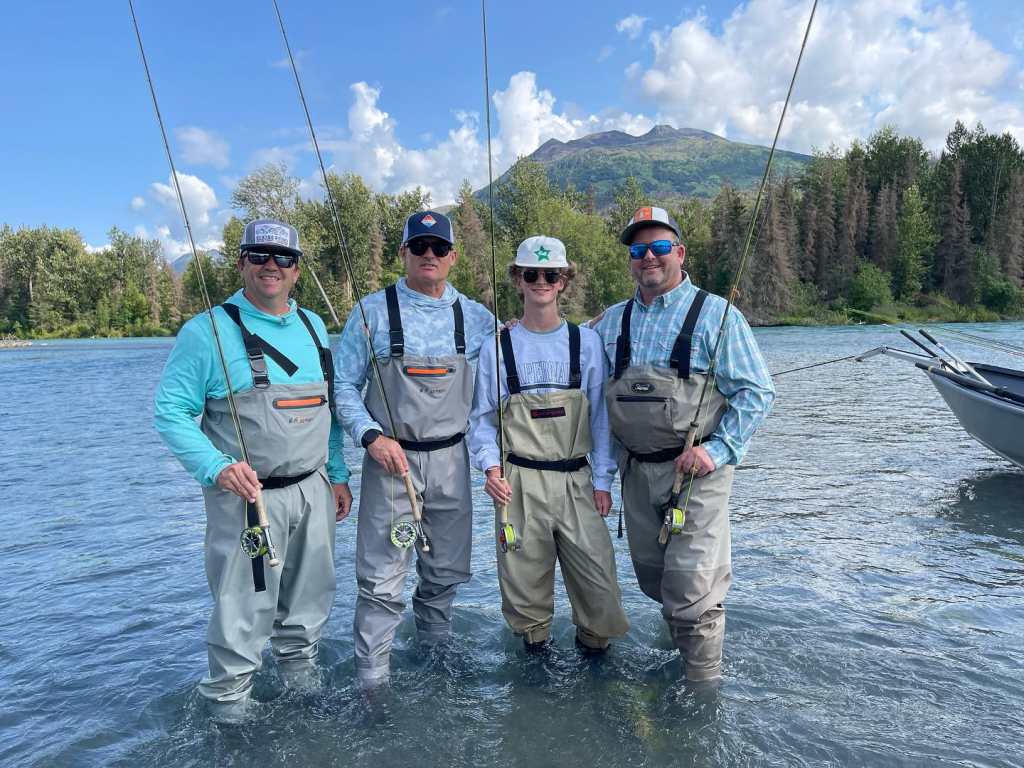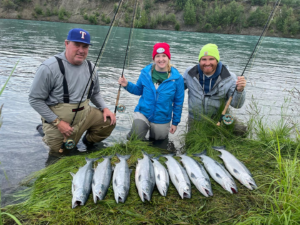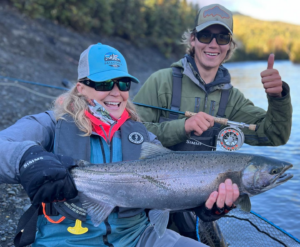To truly understand the Kenai’s depths and treasures, you need something more profound and enduring. You need patience. Join us as we peel back the layers of impatience that modern life has cloaked us in to reveal the core of what it means to fish patiently.
1. Embrace the Wait
In the heart of angling, beyond the gear and the technique, lies the virtue of patience. Embracing the wait doesn’t mean you idly pass the time. Instead, you enter a state of active anticipation where every moment by the water is an opportunity for growth and connection.
This shift in perspective transforms the act of waiting from a passive to an active endeavor. It’s not merely about holding a rod and hoping for a bite; it’s about engaging with the environment, understanding the rhythm of the water, and becoming attuned to the subtle signs that precede a catch.
To truly embrace the wait, one must find joy in the stillness and the quiet. Appreciate the soft murmur of the river, the play of light on the water’s surface, and the occasional thrill of a fish breaking the calm. This appreciation builds a foundation for patience. It teaches anglers that the value of fishing extends beyond the catch itself.
Embracing the wait also equips anglers with the resilience needed to weather the inevitable ebb and flow of fishing fortunes. It reinforces the understanding that every cast won’t bring a catch and that the true reward lies in the fishing experience itself.
2. Observe and Learn
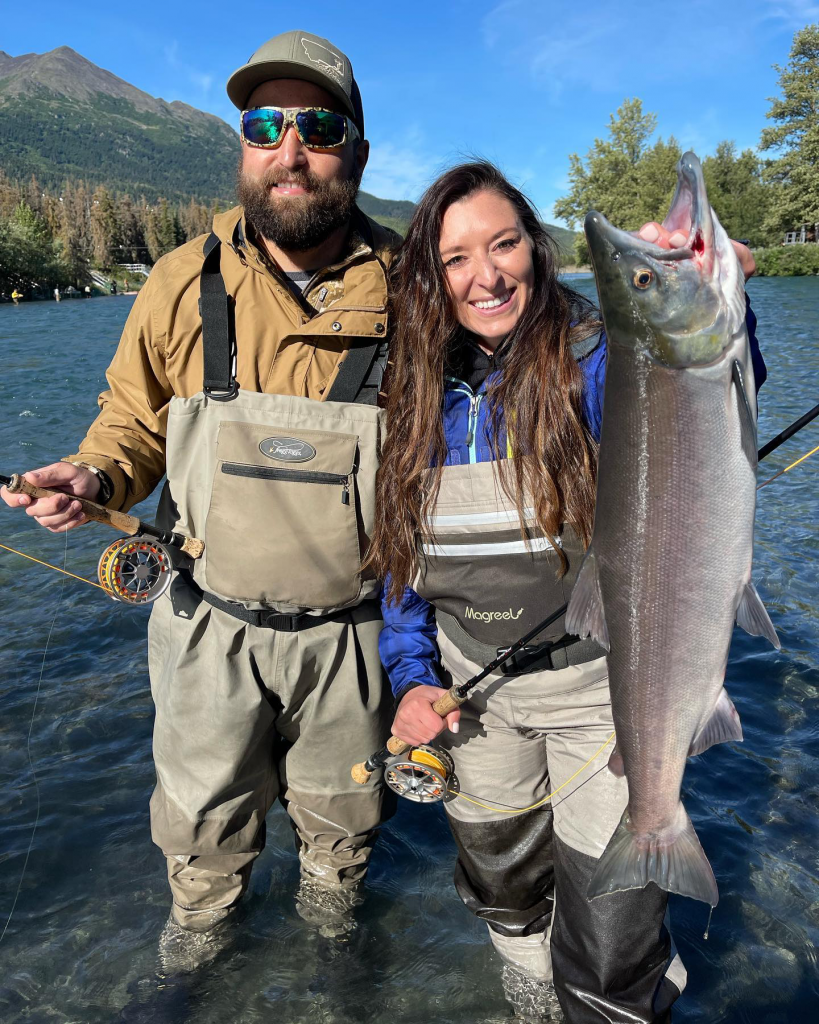
The Kenai River, with its diverse habitats and rich aquatic life, is a classroom where observation is the key to becoming a more skilled and patient angler.
This learning process begins with a keen eye and an open mind. You must be ready to absorb the myriad lessons that the river offers. Observing the water’s flow, the behavior of fish, and the patterns of wildlife provides invaluable insights that can refine your fishing strategy and enhance your overall experience.
Observation teaches anglers to read the water and identify potential hotspots where fish are likely to feed or rest. It involves understanding the nuances of current and depth, recognizing the signs of insect hatches, and noting the times when fish are most active. This knowledge allows anglers to anticipate fish movements and adapt their techniques accordingly.
Observation extends beyond the water to the surrounding environment. The behavior of birds, for example, can indicate the presence of fish. Changes in weather patterns can affect fish activity. By observing and learning from these environmental cues, anglers can develop a holistic understanding of the ecosystem.
This process of observation and learning isn’t passive; it requires patience, attention, and curiosity. It’s a dynamic engagement with the river and its inhabitants, where every outing offers new lessons and discoveries. Through this continuous cycle of observation, learning, and adaptation, anglers can improve their skills and cultivate a sense of stewardship for the river and its resources.
3. Set Realistic Goals
Embarking on a fishing journey with a trophy-sized catch as the sole measure of success sets the stage for disappointment.
The Kenai River, with its majestic flows and abundant life, offers more than just a numbers game; it’s a haven for those seeking a deeper connection with the wild. Setting realistic goals means aligning your ambitions with the river’s natural rhythm and respecting the unpredictable nature of fishing.
Realistic goals include mastering a new casting technique, understanding the river’s ecology, or simply enjoying uninterrupted hours in nature’s lap. These objectives foster a sense of achievement irrespective of the catch count.
For example, perfecting the art of fly casting or becoming proficient with bead patterns for sockeye salmon can be incredibly rewarding. Such goals emphasize skill development and personal growth. They enrich the fishing experience.
This approach also mitigates frustration (especially on challenging days when the fish seem elusive). By celebrating the smaller victories, like a well-placed cast or a day spent without the distraction of technology, anglers find satisfaction beyond the reel. This mindset cultivates a resilient spirit prepared to embrace the highs and lows of fishing with equal grace.
4. Practice Mindful Fishing
Mindful fishing is an immersive experience that connects the angler with the moment. On the Kenai River, where nature’s bounty unfolds in every ripple and bend, practicing mindfulness means engaging fully with the environment.
This practice begins with a conscious effort to focus on the here and now. Feel the weight of the rod in your hand, the texture of the line, and the movement of the cast. Observe the interplay of light and shadow on the water’s surface, the gentle sway of riverside foliage, and the vibrant hues of the sky as it reflects upon the river. Each of these elements offers a pathway to deeper awareness and appreciation.
Mindful fishing also involves an acceptance of what the river offers. It’s about finding joy in the anticipation of a bite, the challenge of the catch, and even the quiet moments in between. This acceptance encourages patience. It reduces the stress and frustration that can accompany unmet expectations.
By practicing mindful fishing, anglers cultivate a state of calm and centeredness that enhances their experience on the water. It transforms fishing into a meditative act where each moment holds intrinsic value, and the connection between angler and nature is strengthened.
5. Fish with Friends
On the Kenai River, where the waters are as generous as they are challenging, having a buddy by your side can turn a day of fishing into an unforgettable story. The laughter, shared strategies, and friendly rivalries that arise when lines are cast together are quite simply unmatched.
This social aspect of fishing fosters a unique bond. Friends serve as both teachers and cheerleaders; they share tips and techniques to enhance each other’s skills while providing encouragement during the inevitable lulls. The shared knowledge and experiences contribute to a deeper understanding of the river and its inhabitants.
Moreover, fishing with friends creates memories that extend beyond the day’s catch. Whether it’s the shared silence of a sunrise over the river or the collective celebration of a particularly challenging catch, these moments become the stories that are told and retold, strengthening friendships and deepening the connection to the sport.
6. Accept the Uncontrollable
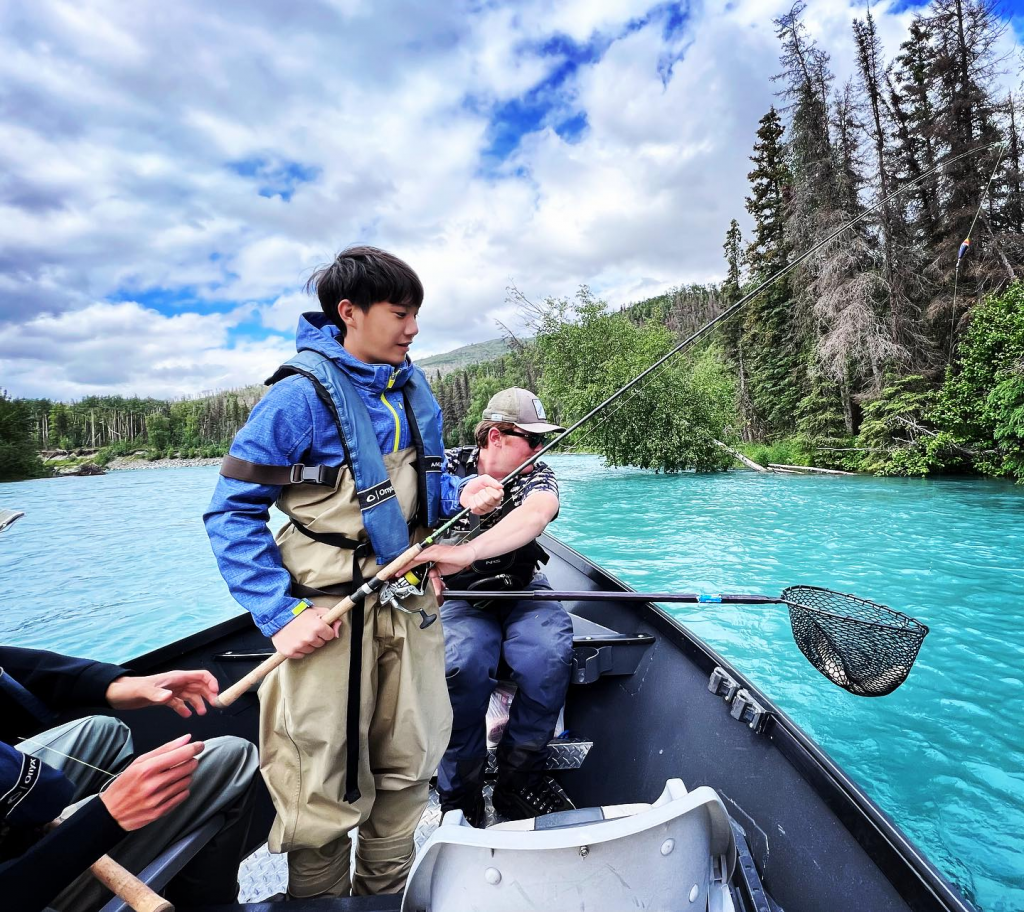
The Kenai River, with its shifting moods and unpredictable bounty, serves as a constant reminder that every element of fishing isn’t within our control. Weather, water conditions, and fish behavior are all variables that can change with little warning and affect the day’s prospects. Accepting the uncontrollable aspects of fishing teaches patience and resilience.
This acceptance isn’t about resignation but rather flexibility and adaptability. It encourages anglers to focus on what they can control: their preparation, attitude, and response to changing conditions. By embracing the inherent uncertainties of fishing, anglers learn to appreciate the experience for what it is: a chance to engage with the natural world, learn from it, and find joy in the unexpected.
This acceptance fosters a deeper respect for the river and its ecosystems. It’s a reminder that we’re visitors in a world governed by its own rules. This humble approach enriches the personal fishing experience and contributes to a broader ethic of conservation and stewardship.
Start Fishing with Jason’s Guide Service
At Jason’s Guide Service, we know that patience is more than just waiting; it’s the art of becoming one with the river and the fish that call it home. It’s a skill honed over countless casts and quiet moments.
Let’s embark on this journey together! We provide a range of guided fishing trips on the Kenai River, including salmon fishing and Kenai rainbow trout fishing. You can also opt for a custom guided fly fishing expedition. Book now!

